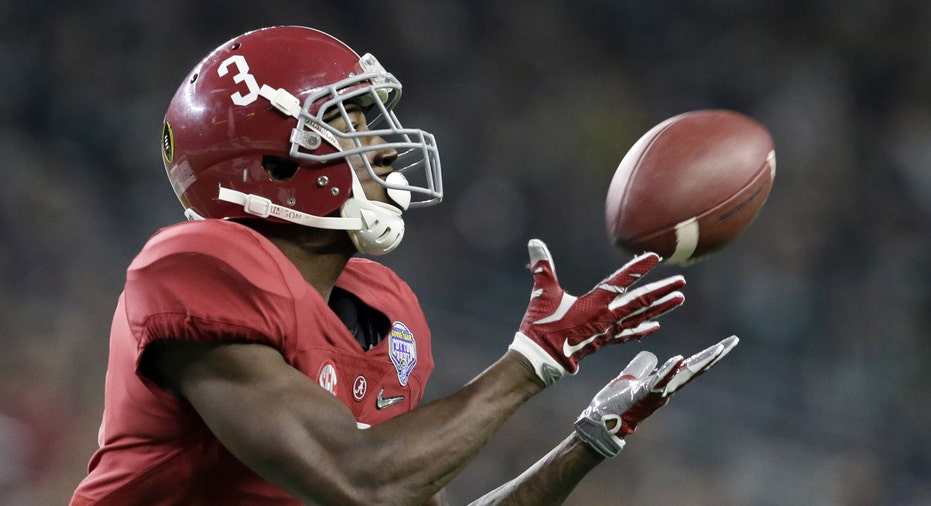College Football Playoff TV Ratings Plunge On NYE

The College Football Playoff’s bid to establish a fresh New Year’s Eve tradition imploded over the holiday weekend. Television viewership plummeted amid questionable scheduling and a series of on-field blowouts.
The Alabama Crimson Tide’s 38-0 trouncing of the Michigan State Spartans in the Goodyear Cotton Bowl Classic drew a 9.9 rating, while the Clemson Tigers’ 37-17 win over of the Oklahoma Sooners in the Capital One Orange Bowl generated a 9.7 rating. The numbers were down 36% from last year, when the semifinals games from the first-ever College Football Playoffs set cable TV records with ratings of 15.5 and 15.3, respectively.
In all, about 18.5 million viewers watched the College Football Playoff semifinals on New Year’s Eve, down from the more than 28 million television viewers that watched the semifinals a year earlier, according to the Associated Press. Total viewership dropped about 34%.
“Overall, there’s no way to spin the ratings positively,” said Andrew Billings, director of the University of Alabama’s sports communication program. “Particularly for the semifinal games, I know of no estimates that were any lower than that. The larger issue right now is the percentage drop that can be attributed to scheduling and the percentage drop that is more likely the result of games that could nearly all be classified as blowouts.”
The decision to schedule the College Football Playoff on New Year’s Eve drew widespread criticism last week, as fans and pundits questioned why officials would set up the event to compete against work schedules and more traditional holiday programming. Historically, the NCAA has scheduled major college football bowl games on New Year’s Day, when most Americans are off from work.
As of now, College Football Playoff officials do not plan to reschedule future semifinals games to avoid New Year’s Eve.
“As we always do, we’ll review the final numbers but I do not anticipate changes in the schedule going forward,” College Football Playoff Executive Director Bill Hancock said.
The lack of fan interest in the six college football bowl games that aired on New Year’s Eve and New Year’s Day had as much to do with noncompetitive outcomes as with schedule conflicts. Several bowl games rapidly turned into blowouts, with an average margin of victory of more than 24 points.
“My guess is that the ratings for the semifinals are about half scheduling and half the lack of close games. The New Year’s Day games are likely all the result of a lack of close games,” Billings said.
While television viewership fell far below the high bar ESPN set during the inaugural College Football Playoff, the network still produced strong numbers as compared to its competitors. In that sense, the daring schedule still produced a victory.
The four bowl games that were not part of the semifinals saw an increase in viewership compared to last season, and ESPN saw a “near historic” spike in digital viewership as well, the media company said in a statement.
“The College Football Playoff is a long-term, multiplatform play for us,” Burke Magnus, ESPN’s executive vice president of programming and scheduling, said in a statement. “With that said, there are many variables that impact ratings results including what happens on the field and the numbers this year were obviously impacted by the unbalanced scores of these games.”
Fresh off dominant performances in their respective semifinals games, Alabama and Clemson will face off on January 11 in the College Football Playoff National Championship. Last year’s game drew an audience of more than 33 million viewers, which made it the most-watched cable program in history.
Even after the ratings struggles on New Year’s Eve, a close battle between the two powerhouses could once again challenge cable records.
“Hopefully, the championship game on January 11, when programming competition will be less intense and TV usage typically higher, viewers will see a close game giving the ratings a boost,” said Brad Adgate, senior director of media insights at Comcast Spotlight. “They are clearly the top two college teams playing and that’s the intent of the tournament.”